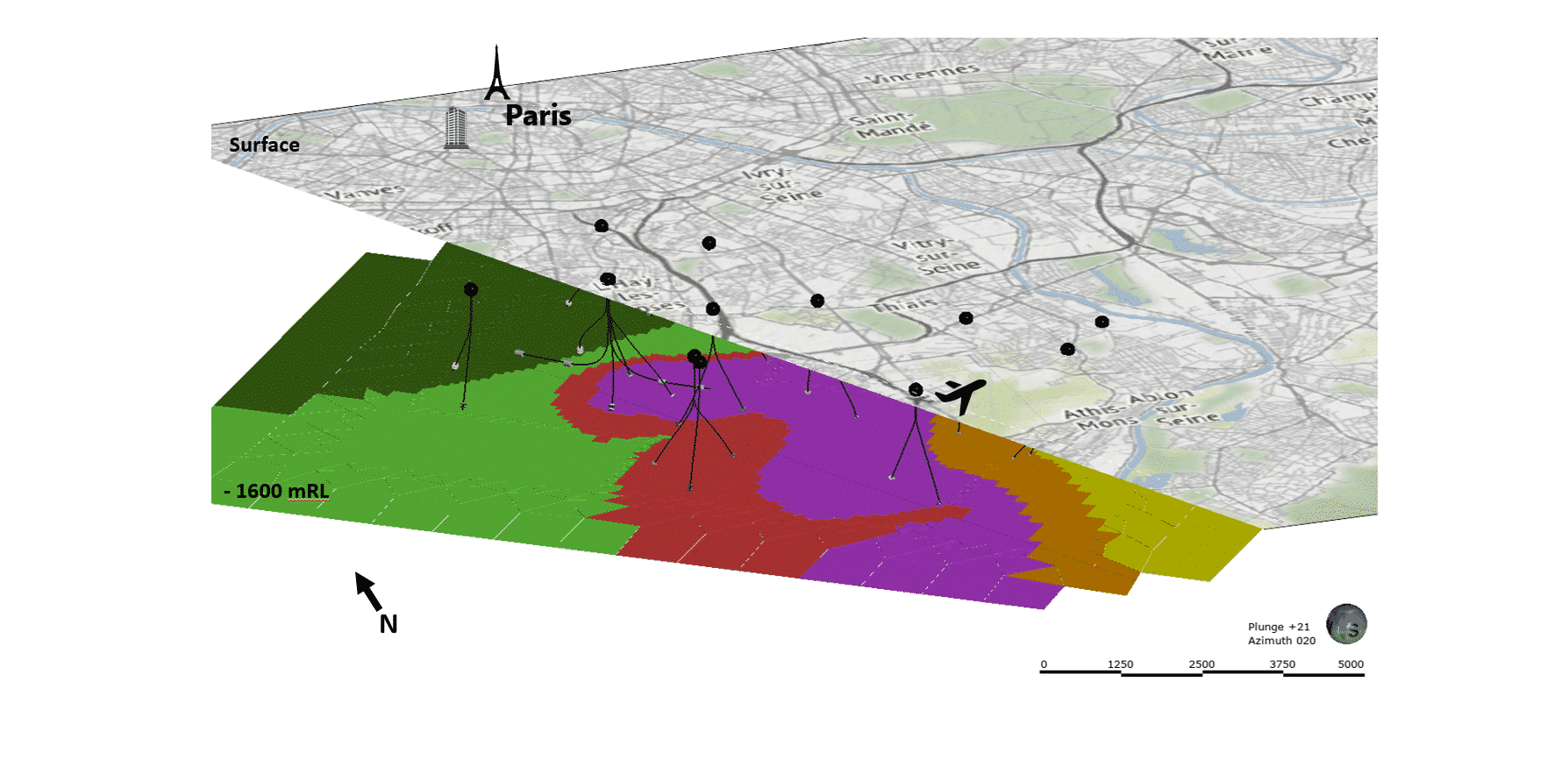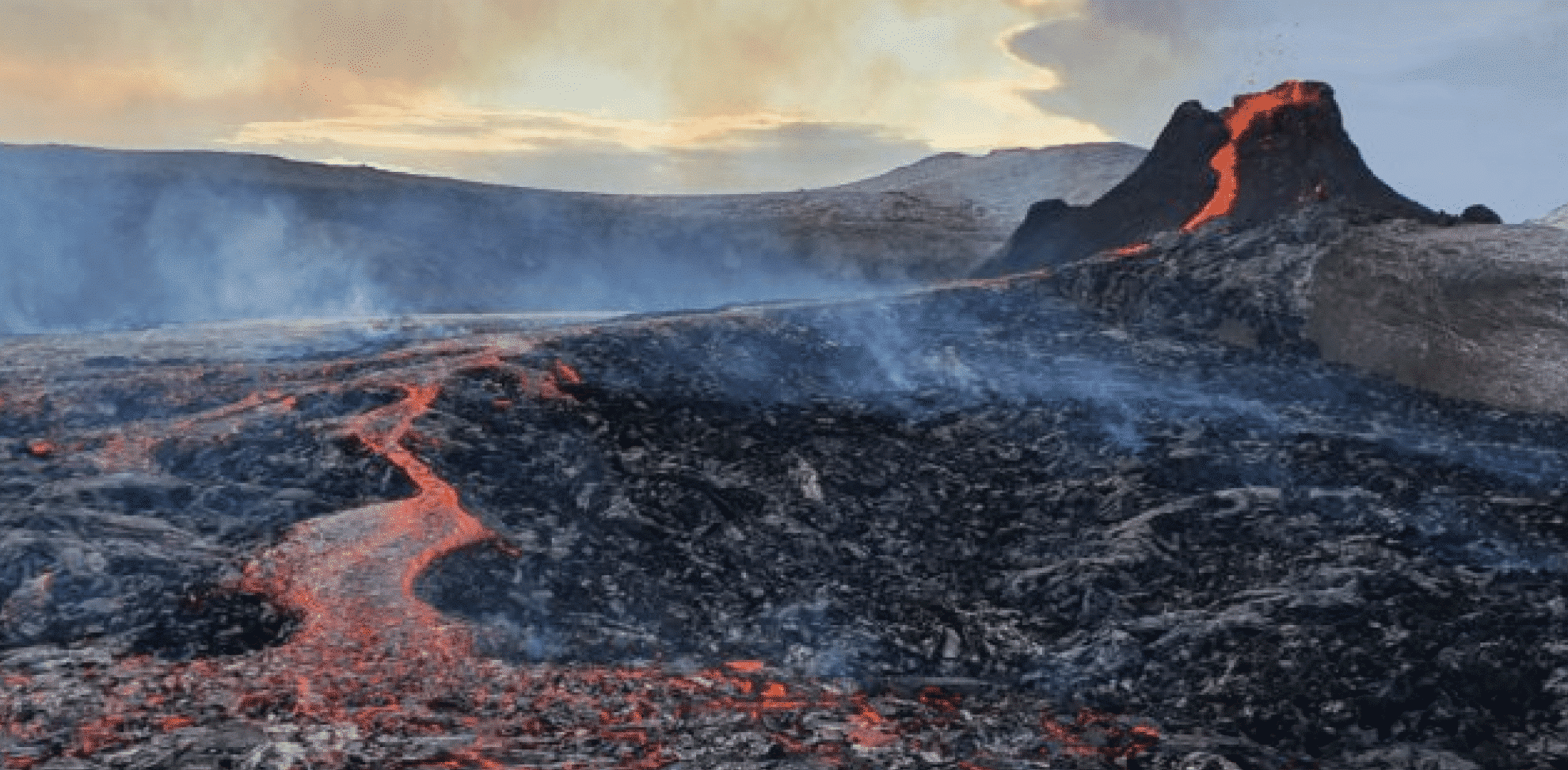Back in 2015, global leaders set a target to curb emissions and work towards a net zero emissions future.
This monumental shift impacts a system integral to daily life worldwide: energy. The International Energy Agency (IEA) predicts that by 2024 investment in clean energy sources and infrastructure will nearly double that in fossil fuels. Yet amidst this transition, we often overlook a critical complexity – the underground.
Even as we strive towards net zero, our reliance on fossil fuels persists. What remains largely unexplored is the intricate interplay between geopolitics, infrastructure, and the Earth’s 4.5-billion-year-old subsurface – the source of 80% of our energy needs, says Seequent Energy Director Jeremy O’Brien.
Whether it’s assessing seabed conditions for wind turbine foundations or drilling deep into the Earth to harness geothermal energy, produce oil and gas, or store the emissions we produce, the underground holds the key to net zero.
That is where Seequent comes in. As global subsurface software specialists, our cutting-edge tools empower energy companies worldwide to navigate the transition, from modelling how hot fluid flows through rock for more productive geothermal power to converting CO2 into minerals and assessing ground conditions for offshore wind farms. As O’Brien puts it: “It’s about helping our customers get the most of their data and have the confidence to make risky, potentially expensive decisions.”
More than just new electrons
Electrification – the process of replacing fossil fuel technologies with electricity-based solutions – is a key component of the transition. While intermittent sources such as solar and wind play a key role, storage solutions are essential in supporting these intermittent sources. The world’s electricity infrastructure relies on baseload power – the 24/7 power that keeps our grids stable and ensures power arrives to the consumers who need it. Geothermal power, tapping into reservoirs of hot fluid beneath the Earth’s surface, plays a crucial role, delivering 24/7 clean renewable energy.
Seequent supports over 60% of globally installed geothermal power generation. Understanding these subsurface reservoirs, even kilometres deep is vital for informed decision making in a high-risk, high-reward environment.
Ormat, a global geothermal leader, faces the challenge of understanding fuel sources kilometres beneath the surface – sources which drive their power plants daily. Whether drilling wells or optimising operations, technology support for these capital intensive activities is essential, regardless of where their projects are in the world. Seequent’s software enables the transformation of complex resource data into 3D conceptual models, facilitating crucial decisions. Simon Webbison, VP Exploration and Resource Management at Ormat says “Leapfrog Energy is the industry standard software and is pivotal to how we do business.”
While geothermal power generation has gained recognition for displacing coal and gas, its downstream benefits are coming into sharper focus. Beyond electricity production, geothermal applications extend to industrial processes, mineral extraction, tourism, and heating applications. This is only now becoming more widely understood, even though this is not a new energy source.
Geothermal energy has been around for a long time, with the first geothermal power plant invented in 1904 by Italian prince Piero Ginori Conti in Tuscany, Italy. For over four decades, geothermal systems have been providing heat to more than 250,000 homes in Paris, drawing energy from aquifers up to two kilometres beneath the city.
Geothermal researcher Joris Popineau has built a digital model of part of the Parisian geothermal network using Seequent’s Leapfrog Energy 3D modelling solution to better understand and monitor this essential renewable energy resource.
“We want to make geothermal energy easy to understand but what we’re essentially mining is an intangible product – heat – that is not always easy to show,” says Popineau. “Leapfrog Energy is a great visualisation tool, tying all our data together beautifully and in a way that you can easily share with other people – even those who are not experts in the field.”
Further to the east in Munich, the local utility company SWM has plans to decarbonise the heating system by 2040 using primarily geothermal heat from deep underlying aquifers.
“The greatest value of geothermal heating is that it replaces baseload electricity or the use of fossil fuels” says O’Brien. “Around 40% of all the energy used in Europe is for heating and cooling, so if you were able to get half of that 40% from drilling some holes in the ground, that is an enormous benefit.”
Rystad Energy estimates that Europe will invest USD $7.4 billion in geothermal heating between 2022 and 2030. This surge in investment reflects the changing landscape as geothermal gains prominence.

Representation of the geothermal wells and the sedimentary reservoir rock types underneath the South Paris area.
Bold expectations on the contribution of offshore wind
Global expectations for offshore wind capacity are ambitious as we strive to meet clean energy targets by 2030. At COP28, world leaders committed to tripling renewable power capacity within the next decade, following the recommendations from the International Renewable Energy Agency (IRENA)’s flagship report World Energy Transitions Outlook 2023. Among renewable energy sources, offshore wind stands out as a key player e in accelerating the energy transition and achieving this ambitious tripling target. According to the report, the world must install nearly 500 gigawatts (GW) of offshore wind by 2030 to meet climate goals.
The pressure on contractors and operators to commission offshore wind farms swiftly underscores the importance of ground modelling and site characterisation. By leveraging all available data, we can reduce the unknowns of subsurface conditions to optimise turbine placement and foundation design. An integrated ground model, such as those built using Seequent software, allows teams to combine multi-disciplinary datasets – such as geology, geophysics, and geotechnical – to understand risk and uncertainty, eliminate data silos, reduce project timelines, and help to mitigate costly project overruns.
Leading European energy company Vattenfall specialises in planning, constructing, and operating offshore wind farms. Their goal is to design wind farms with maximum longevity while minimising operational costs.
Take the Norfolk Boreas offshore wind farm site in the UK, designed by Vattenfall. Here, the primary objective was to understand and predict seabed levels throughout the wind farm’s lifetime. This knowledge is crucial for the safe and efficient installation and maintenance of bottom-fixed foundations and the design of load-bearing structures.
Vattenfall turned to Seequent’s geophysical modelling tool, Oasis montaj, for seabed investigations due to its accuracy, efficient data handling and user-friendly interface. Oasis montaj even automates the export of results, saving significant time during design iterations, foundation cost and a reduction in CO2 emissions.
Fast metrics:
€5 million
Savings in foundation cost = €5 million Euro (steel savings)
30 minutes
Savings in model sampling time = reduced from 6 hours to 30 minutes
Up to 5,000 tons
Savings in CO2 emissions = 2,000-5,000 tons due to lighter foundations
Keeping the lights on
Yet, renewable generation is only one piece of the puzzle. Recent reports from IEA and BP indicate that we will still be reliant on fossil fuels well past 2050, albeit in reduced volumes. Natural gas, for example, is a key bridging fuel in the transition and we will need to store emissions to hit our net zero targets.
For oil and gas companies, understanding critical energy producing areas is paramount for the transition. Reducing the risk around high capital expenditure activities such as seismic acquisition and exploration and development drilling is critical. Seequent’s technology, honed over 30 years, aids in deciphering key structures and areas of interest. Techniques like gravity and magnetics provide much needed insights when making decisions about investing in projects or not. Seequent supports six of the top ten energy producers globally, delineating new reserves to ensure supply in a transitioning world.
Similarly, screening areas for CO2 storage requires integrating multiple data sources, which may not be normal in traditional oil and gas workflows, says O’Brien. “Flexible workflows and tools are required to understand the available capacity for storage, in existing reservoirs or saline aquifers”.
Moving at pace
As we navigate our way towards net zero, subsurface data becomes pivotal. Extracting maximum value from data through technology and sharing learned understanding will play a pivotal role to shape a cleaner future.
Whether it’s streamlining traditional energy sources, geothermal, carbon capture and storage, or offshore wind, the transition starts underground.





